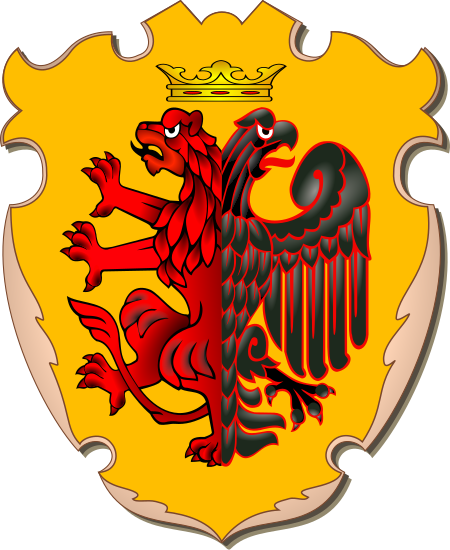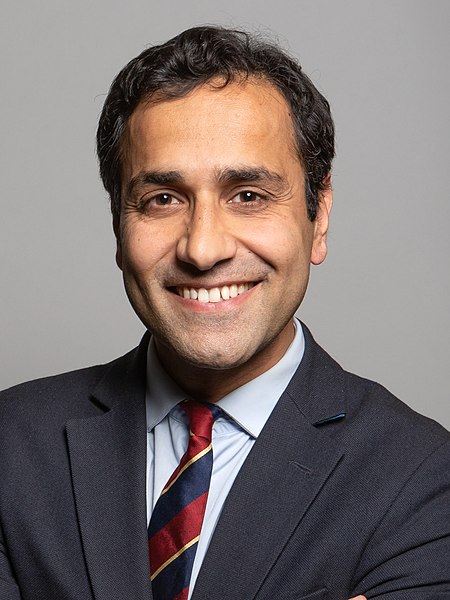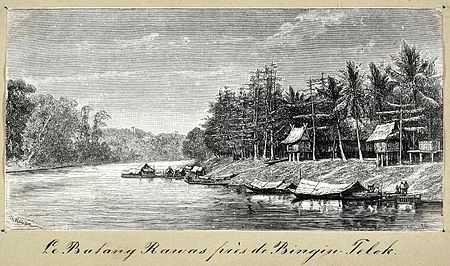Jivatva
|
Read other articles:

هنودمعلومات عامةنسبة التسمية الهند التعداد الكليالتعداد قرابة 1.21 مليار[1][2]تعداد الهند عام 2011ق. 1.32 مليار[3]تقديرات عام 2017ق. 30.8 مليون[4]مناطق الوجود المميزةبلد الأصل الهند البلد الهند الهند نيبال 4,000,000[5] الولايات المتحدة 3,982,398[6] الإمارا�…

Cet article concerne l'activité commerciale. Pour les autres significations, voir Commerce (homonymie). « Commercial » redirige ici. Pour l'activité professionnelle lié à la vente, voir Commercial (métier). Si ce bandeau n'est plus pertinent, retirez-le. Cliquez ici pour en savoir plus. Cet article ne cite pas suffisamment ses sources (décembre 2016). Si vous disposez d'ouvrages ou d'articles de référence ou si vous connaissez des sites web de qualité traitant du thème …
2020年夏季奥林匹克运动会波兰代表團波兰国旗IOC編碼POLNOC波蘭奧林匹克委員會網站olimpijski.pl(英文)(波兰文)2020年夏季奥林匹克运动会(東京)2021年7月23日至8月8日(受2019冠状病毒病疫情影响推迟,但仍保留原定名称)運動員206參賽項目24个大项旗手开幕式:帕维尔·科热尼奥夫斯基(游泳)和马娅·沃什乔夫斯卡(自行车)[1]闭幕式:卡罗利娜·纳亚(皮划艇)[2…

اكتئاب ما بعد الولادة Postpartum depression معلومات عامة الاختصاص طب نفسي، وعلاج نفسي، وعلم النفس السريري من أنواع اضطراب النفاس، واضطراب مزاجي، ومرض، واكتئاب المظهر السريري الأعراض بكاء، واكتئاب، وإعياء الإدارة أدوية دولوكسيتين، وسيرترالين …

American actor (b. 1963) Dermot MulroneyMulroney in 2018BornDermot Patrick Mulroney (1963-10-31) October 31, 1963 (age 60)Alexandria, Virginia, U.S.Alma materNorthwestern UniversityOccupation(s)Actor, cellistYears active1986–presentSpouses Catherine Keener (m. 1990; div. 2007) Prima Apollinaare (m. 2008)Children3 Dermot Patrick Mulroney (born October 31, 1963) is an American actor. He is known fo…

Великопольська провинция на схеме Речи Посполитой (1619 год). Великопольская провинция (пол. Prowincja wielkopolska) — административно-территориальная единица (провинция) Королевства Польского и Короны Польской в Речи Посполитой (до 1772 года[1]). Всего было три провинции[1] — …

British Conservative politician, MP for Gillingham and Rainham The subject of this article is standing for re-election to the House of Commons of the United Kingdom on 4 July, and has not been an incumbent MP since Parliament was dissolved on 30 May. Some parts of this article may be out of date during this period. Please feel free to improve this article (but note that updates without valid and reliable references will be removed) or discuss changes on the talk page. Rehman ChishtiMPO…

Railway Station in Uttar Pradesh, India New Ghaziabad railway stationIndian Railways stationNaya Ghaziabad station boardGeneral informationLocationMaharana Pratap Marg, Lohia Nagar, Ghaziabad, Uttar PradeshIndiaCoordinates28°40′28″N 77°26′17″E / 28.6744°N 77.4380°E / 28.6744; 77.4380Elevation216 metres (709 ft)Owned byIndian RailwaysOperated byNorthern RailwayLine(s)Delhi–Meerut–Saharanpur linePlatforms2Tracks4 (construction – doubling of diesel BG)…

CCP confidential internal document outlining dangerous Western values Communiqué on the Current State of the Ideological SphereSimplified Chinese关于当前意识形态领域情况的通报Traditional Chinese關於當前意識形態領域情況的通報Literal meaningBriefing on the Current Situation in the Ideological RealmTranscriptionsStandard MandarinHanyu PinyinGuānyú dāngqián yìshí xíngtài lǐngyù qíngkuàng de tōngbào Document Number Nine (or Document No. 9), more prope…

SsireumNama KoreaHangul씨름 Alih AksarassireumMcCune–Reischauerssirŭm Ssireum adalah jenis olahraga gulat tradisional dari Korea. Sejarah Ssireum merupakan olahraga tertua di Korea yang sudah dipraktikkan sejak zaman prasejarah.[1] Pada masa lalu, masyarakat Korea melindungi diri daripada ancaman musuh dengan mengembangkan ilmu beladiri. Ssireum bermula dari gerakan-gerakan mencengkeram dengan tangan dan lama kelamaan gerakan baru mulai diciptakan. Pada zaman Tiga Kerajaan, ssireum …

Bingin TelukKelurahanNegara IndonesiaProvinsiSumatera SelatanKabupatenMusi Rawas UtaraKecamatanRawas IlirKodepos31655Kode Kemendagri16.13.04.1005 Kode BPS1613060012 Luas... km²Jumlah penduduk... jiwaKepadatan... jiwa/km² Batang Rawas dekat Bingin Teluk (1893). Bingin Teluk adalah sebuah kelurahan yang berada di wilayah Kecamatan Rawas Ilir, Kabupaten Musi Rawas Utara, Sumatera Selatan, Indonesia. Pranala luar (Indonesia) Keputusan Menteri Dalam Negeri Nomor 050-145 Tahun 2022 tentang Pemb…

This article's lead section may be too short to adequately summarize the key points. Please consider expanding the lead to provide an accessible overview of all important aspects of the article. (January 2020) Walter TroutTrout performing at the Ottawa Bluesfest in 2008Background informationBorn (1951-03-06) March 6, 1951 (age 73)Ocean City, New Jersey, United StatesGenresBlues, blues rockOccupation(s)Musician, songwriterInstrumentsVocals, guitarYears active1969–presentLabelsRuf/Platinum/…

Hamry nad Sázavoucomune Hamry nad Sázavou – Veduta LocalizzazioneStato Rep. Ceca Regione Vysočina DistrettoŽďár nad Sázavou TerritorioCoordinate49°33′50″N 15°54′16″E49°33′50″N, 15°54′16″E (Hamry nad Sázavou) Altitudine445 m s.l.m. Superficie7,11 km² Abitanti1 455 (2011) Densità204,64 ab./km² Frazioni3 Altre informazioniCod. postale591 01 Fuso orarioUTC+1 Codice ČSÚCZ595586 TargaZR CartografiaHamry nad Sázavou Sito istituzion…

Zhang NingInformasi pribadiNama lahir张宁Kebangsaan TiongkokLahir19 Mei 1975 (umur 49)Jinzhou, Liaoning, TiongkokTinggi175 m (574 ft 2 in)Berat64 kg (141 pon; 10,1 st)PeganganKananTunggal PriaPeringkat tertinggi1Peringkat saat ini4[1] (25 September 2008)Profil di BWF Zhang Ning (Hanzi sederhana: 张宁, pinyin: Zhāng Níng) (lahir 19 Mei 1975) adalah seorang pemain bulu tangkis putri dari Republik Rakyat Tiongkok. Ia menjuarai Kejuaraan Dun…

American medical research institute founded 1984 Beckman Research Institute of City of HopeBeckman Research Institute at City of HopeEstablished1984Field of researchCancer Biology, Cancer Immunotherapeutics & Tumor Immunology, Diabetes and Metabolic Diseases Research, Immunology, Molecular and Cellular Biology, Molecular Medicine, Molecular Pharmacology, Neurosciences, VirologyDirectorSteven T. Rosen, M.D.LocationDuarte, CaliforniaAffiliationsCity of Hope National Medical Center The Bec…

United States historic placeMassachusetts Historical Society BuildingU.S. National Register of Historic PlacesU.S. National Historic Landmark Show map of MassachusettsShow map of the United StatesLocation1154 Boylston StreetBoston, Massachusetts, U.S.Coordinates42°20′47″N 71°5′26″W / 42.34639°N 71.09056°W / 42.34639; -71.09056Built1899ArchitectEdmund M. WheelwrightArchitectural styleColonial RevivalWebsitemasshist.orgNRHP reference No.66000770 &…

2018 South Korean television series This article is about the South Korean TV series. For the guitar composition whose name is rendered in English as Memories of the Alhambra, see Recuerdos de la Alhambra. Memories of the AlhambraPromotional posterHangul알함브라 궁전의 추억Revised RomanizationAlhambeura Gungjeon-ui Chueok GenreScience fantasyActionThrillerRomanceCreated byChoi Jin-hee (Studio Dragon)Lee Myung-han (tvN)Written bySong Jae-jeong[1]Directed byAhn Gil-hoStarringHyun …

Disambiguazione – Se stai cercando altri significati, vedi Pagani (disambigua). Paganicomune Pagani – VedutaVeduta di una parte di Pagani LocalizzazioneStato Italia Regione Campania Provincia Salerno AmministrazioneSindacoRaffaele Maria De Prisco (liste civiche) dal 5-10-2020 Data di istituzione1806[1] TerritorioCoordinate40°44′30″N 14°37′00″E40°44′30″N, 14°37′00″E (Pagani) Altitudine35 m s.l.m. Superficie11,98 km² Abitanti35…

Artikel ini tidak memiliki referensi atau sumber tepercaya sehingga isinya tidak bisa dipastikan. Tolong bantu perbaiki artikel ini dengan menambahkan referensi yang layak. Tulisan tanpa sumber dapat dipertanyakan dan dihapus sewaktu-waktu.Cari sumber: Pergaulan – berita · surat kabar · buku · cendekiawan · JSTOR Topik artikel ini mungkin tidak memenuhi kriteria kelayakan umum. Harap penuhi kelayakan artikel dengan: menyertakan sumber-sumber tepercaya yan…

Chemical compound RB-101Clinical dataOther namesRB-101; phenylmethyl (2S)-2-[(2-([(2S)-2-amino-4-methylsulfanylbutyl]disulfanylmethyl)-3-phenylpropanoyl)amino]-3-phenylpropanoateIdentifiers IUPAC name benzyl N-(3-{[(2S)-2-amino-4-(methylthio)butyl]dithio}-2-benzylpropanoyl)-L-phenylalaninate CAS Number135949-60-9 YPubChem CID119600ChemSpider106792UNIIQN6UQ885QECompTox Dashboard (EPA)DTXSID60929187 Chemical and physical dataFormulaC31H38N2O3S3Molar mass582.84 g·mol−13D model (JSmol)I…

